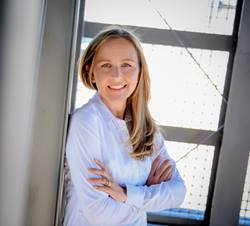These are the finalists for the 2022 KUKA Innovation Award
Team Ligō
The Ligō device is a novel 3D bioprinting platform that supports the functional healing of skin tissue following acute skin wounds such as extensive burns. It is being developed in Australia by the Sydney-based start-up Inventia Life Science together with renowned skin surgeon Professor Fiona Wood and Professor Gordon Wallace’s bioprinting research group. The Ligō robot, whose code name comes from the Latin word meaning “to bind”, prints tiny droplets containing the patient’s skin cells and optimized biomaterials into the wound directly in the operating room using the KUKA LBR Med and Inventia’s patented 3D bioprinting technology. In this way, tissue-guided regeneration is stimulated, allowing the body to heal itself and restore healthy skin that improves the quality of life for skin injury survivors.
Team AROKI
Maternal health remains a major challenge, particularly in developing countries. Many health centers in developing countries lack basic facilities for prenatal ultrasound examinations and qualified professionals to perform them. The AROKI team from IIT Madras in India aims to achieve a significant improvement in the quality of maternal healthcare and prenatal care using robotic solutions. The platform integrates the KUKA LBR Med to enable autonomous scanning, 3D ultrasound reconstruction and teleoperation with immersive virtual reality for visualization, monitoring and diagnosis.
Team Brubotics
Robots will play an increasingly important role in rehabilitation in the future, as rehabilitation robots can provide frequent and repetitive training as well as ergonomic working conditions for the therapist. However, new rehabilitation strategies are also required to improve the functional outcomes of robotic therapy. The team from the Vrije Universiteit Brussel and imec addresses these challenges using the KUKA LBR Med in combination with a soft-sensorized physical interface. Using integrated multimodal sensors, the team is able to add extra layers of safety and comfort and capture user intention in order to develop more flexible rehabilitation robots.
Team ROPCA
ROPCA has a vision to develop a variety of application platforms for robots to help clinics increase the productivity and quality of their daily work. The first product is ARTHUR – an ARTHritis Ultrasound Robot. The application consists of an automated ultrasound platform for the examination of patients with rheumatoid arthritis. The patient can interact directly with the platform and the physician saves time in consulting the patient, as the ultrasound images for diagnosis are already available.
Team cortEXplore
cortEXplore develops neuronavigation technologies for planning, simulating and performing brain surgery. In this project, the team plans to implant neural interfaces with robotic assistance. Specifically, the robot will be guided by the surgical plan in order to implant microelectrodes into the brain. Such operations can be used to implement brain-computer interfaces or to study neural mechanisms of the brain.



